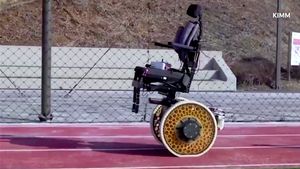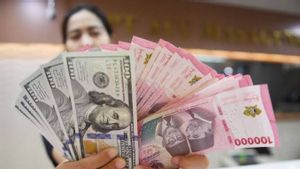JAKARTA - On April 26, 1986, a system test at Reactor RBMK Number Four at the Chernobyl power plant in Ukraine caused the reactor to overheat, which then triggered a series of explosions that resulted in the world's worst nuclear disaster.
The Soviet Union's military quickly established a 'Zona Exclusion Chernobyl' around a power plant - a 30-mile cordon where public access is prohibited due to contamination, and to this day it is still largely quiet, becoming a shelter for wildlife ranging from stray dogs to stray horses.
However, what impact does radiation from 'The Zone' - an area as wide as Yosemite National Park - have on wildlife that now thrives there?
Some animals have begun to show differences from those elsewhere, according to scientists. Some even show what can be explained as'super powers'.
Background radiation in the zone can reach up to 100 times higher than the nearby uncontaminated city of Kiev, but scientists are still debating how big the impact of the radiation (compared to other factors such as human absence).
For humans, The Zone is safe to go through, even visited by tourists (and there are still people working at the Chernobyl power plant, mostly in cleaning efforts).
Tourists are reminded that 'hotspots' off the main track still harbor a dangerous amount of radiation - and are prohibited from eating fish or fungi that thrive in the wild landscape near Kiev, Ukraine.
After the accident, the power plant continued to operate, and other reactors generated electricity until 2000.
Chernobyl Black Frog
Frogs around the destroyed nuclear plant have become darker - a response, researchers believe, to radiation hotspots in 'The Zone'.
The researchers believe that these amphibious animals are rapidly evolving into black skin because green pests are less likely to survive - prompting what researchers call a 'fast evolution'.
Eastern tree dwarfs with the most protective melanin pigment, have the highest chance of survival in areas heavily exposed to radiation, so that the population is dominated by darker frog.
The researchers believe that a period of 'fast evolution' may occur shortly after the accident itself, when radiation levels peaked, a team led by Pablo Burracco wrote in their research.
Super-strong Bacteria
Bacteria found in the wings of kites in Chernobyl are known to be more resistant to the effects of gamma radiation. When exposed to radiation doses, bacteria from Chernobyl can reproduce and live, compared to bacteria from elsewhere.
In a 2016 study published in Scientific Reports, the researchers wrote, 'Long-term effects of radiation in natural populations may be an important selective pressure on the properties of bacteria facilitating survival in certain environments.'
SEE ALSO:
Cancer Resistant Wolf
The mutant wolf roaming the Chernobyl desert has developed what can be explained as a'super force' - and this could save human lives.
Researchers found these animals in the Chernobyl Evacuation Zone (CEZ) had an immune system experiencing genetic changes that showed cancer resistance.
In a 2014 study, Cara Love, an evolutionary biologist at Princeton University, traveled to The Zone with a team of researchers to understand how these animals have been able to survive cancer-causing radiation.
Analysis shows that a number of their genes associated with cancer have new mutations, suggesting that they evolved to protect themselves from radiation.
New Dog?
Thousands of stray dogs now live in 'The Zone', many of whom are descendants of family pets left behind as people fled the area after the 1986 disaster.
A study by South Carolina University scientists analyzed DNA from 302 stray dogs near the power plant and found significant DNA differences from other dog populations.
More research will reveal how much radiation contributes to these genetic differences (compared to other factors such as inbreeding).
Co-autor Elaine Ostrander, a dog genomics expert at the National Human Genome Research Institute, told the New York Times, "Do they have mutations they have that allow them to live and breed successfully in this area?"
"What challenges do they face and how do they respond genetically?" he said.
The English, Chinese, Japanese, Arabic, and French versions are automatically generated by the AI. So there may still be inaccuracies in translating, please always see Indonesian as our main language. (system supported by DigitalSiber.id)


















